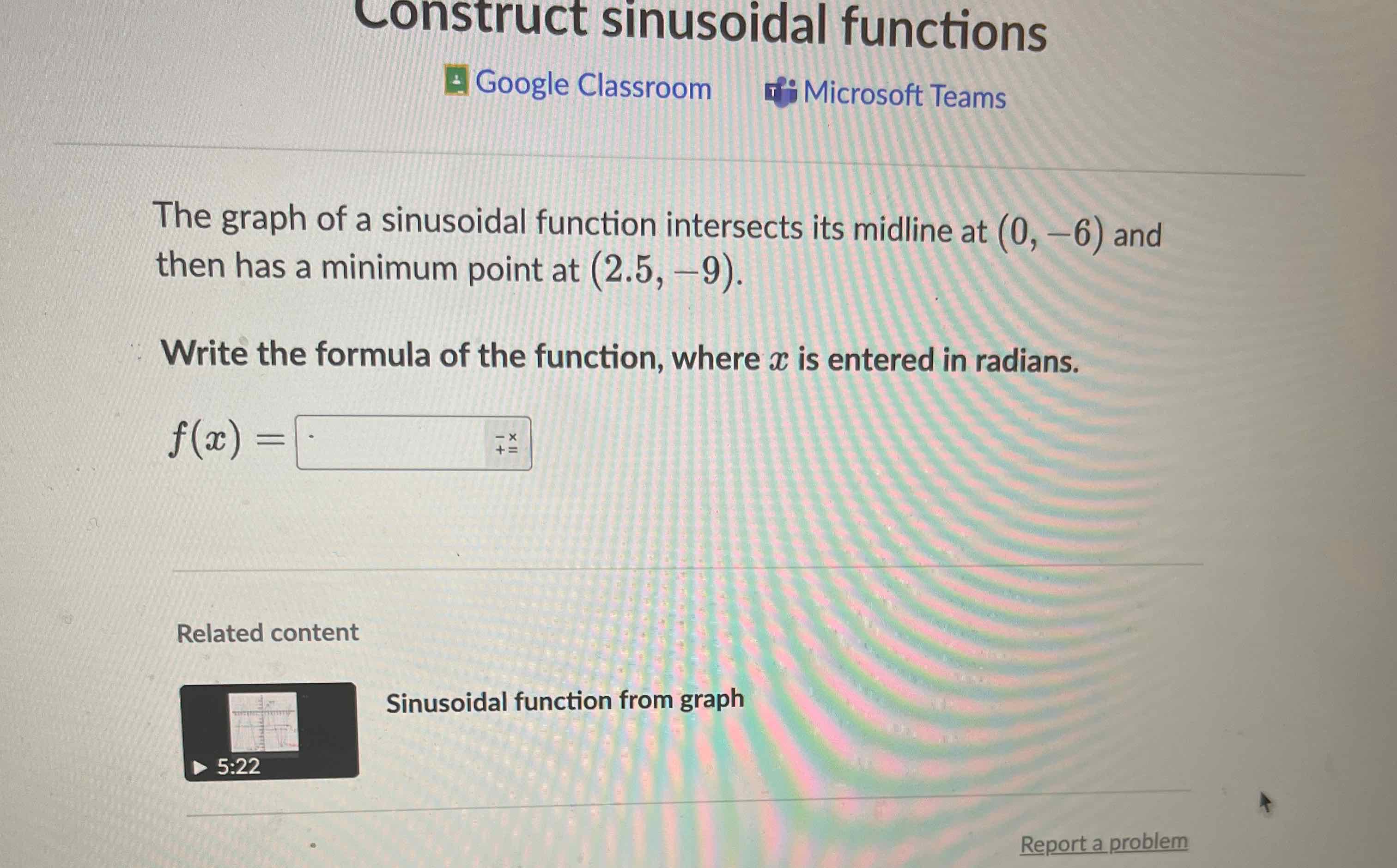Full solution
Q. The graph of a sinusoidal function intersects its midline at and then has a minimum point at .Write the formula of the function, where is entered in radians.
- Determine Midline and Amplitude: Determine the midline and amplitude of the sinusoidal function. The midline is given by the -coordinate of the intersection with the midline, which is . The minimum point is at . The amplitude is the distance from the midline to the minimum or maximum point. Here, the distance from to is , so the amplitude is .
- Identify Period and Phase Shift: Identify the period and phase shift. Since the function reaches a minimum at , and this is the first minimum after crossing the midline at , we can determine that the period is , which is . There is no horizontal shift since the sinusoidal function crosses the midline at .
- Write Sinusoidal Function: Write the sinusoidal function formula. We know the function has a minimum at and crosses the midline at . Since it's a minimum, we use a negative cosine function. The formula is:

